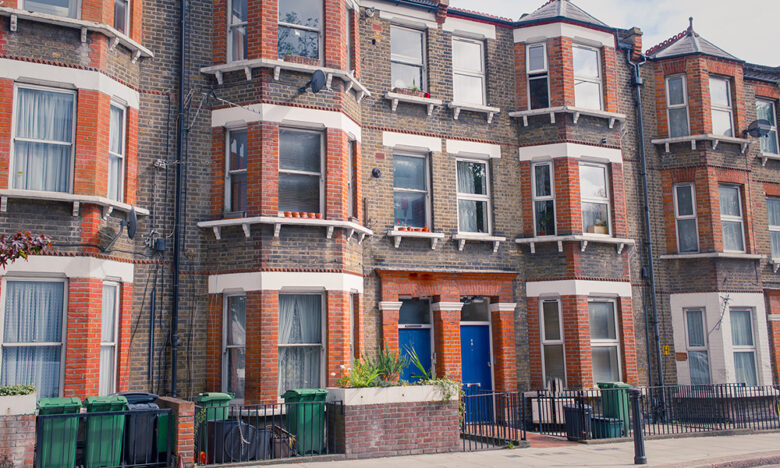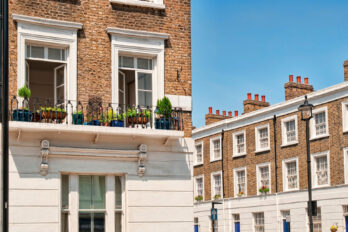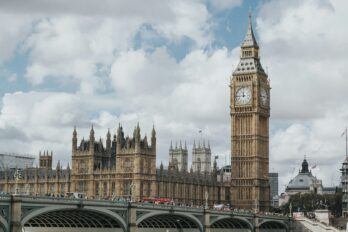
How to Buy the Freehold of Flats With Other Tenants
As a leaseholder, it can feel like you’re stuck paying ever-increasing ground rents and service charge, all while having very little control over the state of your block of flats and the quality of any work done to it.
Since 1993 and the introduction of the Leasehold Reform Act, however, tenants in blocks of flats have had the right to collectively acquire the freehold of their building – a process known as collective enfranchisement. While this could seem like the answer to all your problems, removing any worries about lease lengths and unexpected charges, in truth, the process can be complex and relies on neighbours working closely together to meet a number of obligations. So, should you buy the freehold of your block of flats with other tenants and, if so, how do you go about it?
Leasehold or freehold?
Firstly, let’s be clear about the differences between a leasehold and a freehold property. With leasehold, you’ll own the property for a fixed term but not the land on which it stands; you’ll also have to pay an annual ground rent. When the lease expires, ownership of the property reverts to the freeholder. With a freehold, you own the property and land on which it stands outright, and there is no time limit on this.
The advantages of buying the freehold
This explanation makes it easy to see why leaseholders could be interested in buying the freehold of their flats. By acquiring the freehold, you and your fellow tenants will be responsible for managing your building and the land it’s on. This means you can choose your preferred managing agents or, if you’re feeling brave, even self manage and prioritise repairs and improvements based on your needs and preferences rather than an external freeholder. You’ll also be able to scrutinise costs for such works more closely, and you’ll no longer have to pay ground rent.
Another major drawback of leasehold flats is that time left on the lease decreases. Once it hits around 80 years, leaseholders are advised to start looking into extensions, which can be a costly process. However, when the freehold is purchased, leases can be extended to 999 years, meaning you can be more confident that the property will at least hold its value for some time to come. More likely, buying the freehold will actually lead to an increase in the value of your flat. You can also take the opportunity to get a solicitor to modernise the terms of the lease if there are clauses that tenants feel are restrictive, such as not being able to keep pets.
Common issues with buying freeholds
With clear financial and security benefits possible, it may seem like buying the freehold is the best move for all leaseholders, but this isn’t necessarily the case. The process is complex; getting buy-in from tenants can be tough, and managing a building can be time-consuming, with rules and regulations that must be followed. The opportunity for disputes between neighbours also should not be underestimated.
Qualifying criteria to buy a freehold
If you believe this is the best move for you, there are a number of criteria that must be met before the process can begin. This includes the fact that the building must be a self-contained block of at least two flats and have no more than 25% non-residential use. Two-thirds of the flats must be held by qualifying tenants; tenants who own a flat that had a lease term of more than 21 years when it was sold. Crucially, at least 50% of the total number of flats within the building want to buy the freehold.
If these criteria are met, the freeholder must sell the freehold.
It’s worth noting, however, that if the freeholder lives in the property and they did so before it was converted into flats, or if it’s a charitable housing trust, National Trust, crown or cathedral precinct property, you have no right to buy the freehold. Also, leaseholders who own three or more properties within the block will not be able to participate.
How to buy the freehold?
Step one would be to speak to your fellow tenants to see if they are interested in starting the process. If they are, be sure to source professional support at an early stage. A solicitor will be invaluable in advising on the process, while a surveyor can also offer important advice and carry out the all-important freehold valuation.
The next step would be to get a binding agreement from participating tenants. As buying a freehold can be a lengthy process, it’s possible that some people may get frustrated and attempt to pull out. By signing a participation agreement now, you can be clear on the costs involved, how they will be divided and any penalties associated with not honouring the agreement.
At this point, you’ll have to agree to a ‘nominee purchaser’ who will buy the freehold. Most likely, you won’t want to put all of this on to one person, so a popular option is to set up a limited company to do this.
If you decide to set up a company, remember that you’ll have to file accounts and elect directors, so speak to your solicitor about any rules and regulations you’ll need to follow.
Once your nominee purchaser is in place, your solicitor will then approach your freeholder to issue an initial notice stating your offer, signed by every participating leaseholder. From now on, the leaseholders are liable for the freeholders’ reasonable legal and valuation costs, so it’s worth double-checking all requirements are met before taking this step.
It’s then a case of waiting.
Once the freeholder has been informed of tenants’ plans, they have two months to respond. If they don’t, you can buy the freehold at the price stated. The freeholder can also make a counteroffer, and it will then be a case of negotiating to reach a price everyone is happy with.
What happens if the freeholder disputes the claim?
If you can’t agree a price, you can apply to the First-Tier Tribunal to get the cost decided. Crucially, you must apply to the tribunal within six months of when the freeholder’s counter-notice was due; otherwise, you’ll have to restart the entire process.
Following a hearing, the First-Tier Tribunal will send a written decision stating their findings.
How much does it cost to buy the freehold of my flat?
There is no set cost when it comes to buying a freehold. Factors such as location, market value of the building, unexpired term of the lease and ground rent will all have an impact, which is where your surveyor comes in. Your surveyor will play a vital role in the collective enfranchisement process, coordinating flat owners for access and valuation inspections and hosting discussions relating to the price the leaseholders should pay to purchase their freehold. They will be actively involved in any negotiations of the price to be paid, so look for someone with specialist knowledge in this area as it may well save you money.
In addition to the cost of actually acquiring the freehold, you’ll also have to pay legal fees, valuation fees and possibly stamp duty.
Many lenders will extend a mortgage to pay for buying a share of the freehold but be sure to check you can afford the repayments before you start.
To get an estimate of the cost of buying your freehold, try our Freehold Purchase Calculator.
The Novello approach
Buying a freehold isn’t the right option for everyone, and it can be cheaper and easier to extend your lease, so be sure to look at all your options before you make a decision. Whatever you decide, we have impartial, experienced leasehold experts and RICS registered valuers on hand to help. We can even produce collective enfranchisement reports that detail the worst- and best-case scenarios for all parties involved to help guide you on the right path.
Either way, we’ll make sure you get a fair deal by determining the market value of your property and liaising with all parties involved in the process, helping to save you time, money and stress.
To find out more about buying your freehold with your neighbours, download our free ebook, or read more about our services for leaseholders here.

